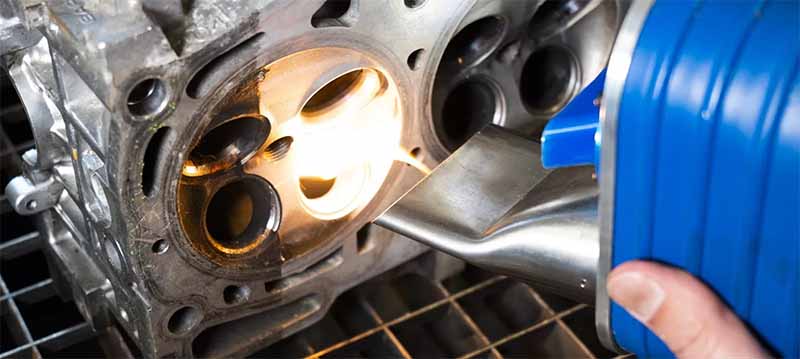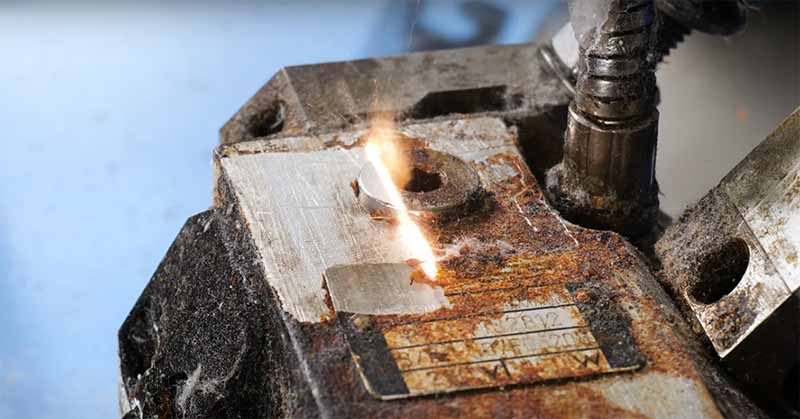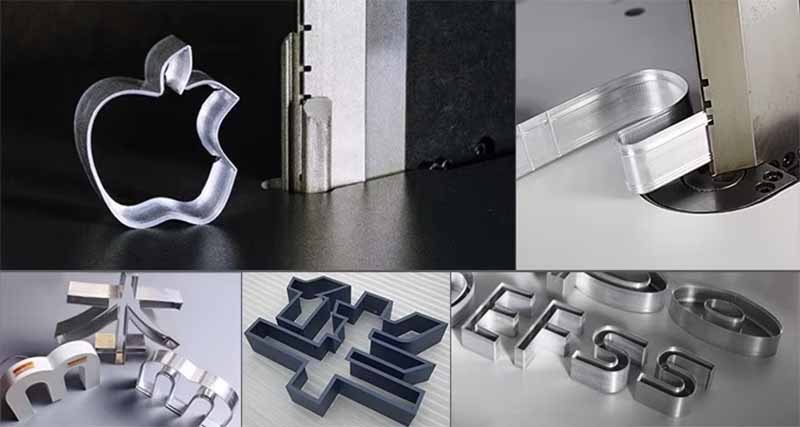Paint removal can be a challenging task, especially when dealing with delicate surfaces or stubborn coatings. Traditional industrial cleaning like chemical stripping and abrasive blasting often come with drawbacks such as environmental concerns, surface damage, and low efficiency. Laser cleaning technology offers a modern, efficient, and eco-friendly alternative, providing precise paint removal without harming the underlying material. In this article, we’ll explore how laser cleaning remove paint, their applications on wood and metal.
The laser cleaning machine relies on laser pulses generated by the laser source. It is based on the photophysical reactions triggered by the interaction between high-intensity light beams, short-pulse lasers, and the contamination layer.
Laser cleaning machine for paint stripping plays a crucial role across various industries, including automotive manufacturing, semiconductor wafer cleaning, precision component processing, building wall cleaning, heritage preservation, circuit board cleaning, LCD screen cleaning, oxide removal, grease removal, and paint stripping.
How to Use a Laser to Remove Paint
Laser cleaning machines utilize mechanisms such as thermal vibration, thermal shock, and acoustic vibration to irradiate the surface of an object, disrupting the adhesion forces between the paint and the substrate. Without damaging the underlying material, the laser removes the paint layer or oxides through photochemical decomposition and laser ablation, effectively stripping the surface coating.
On metal surfaces, the paint layer behaves like a special plasma layer, providing corrosion and oxidation resistance. The formation of this plasma requires the laser energy density to exceed a specific threshold, which varies depending on the type of paint or oxide being removed. Precise control of energy density is critical to achieving efficient cleaning while ensuring the substrate remains undamaged.
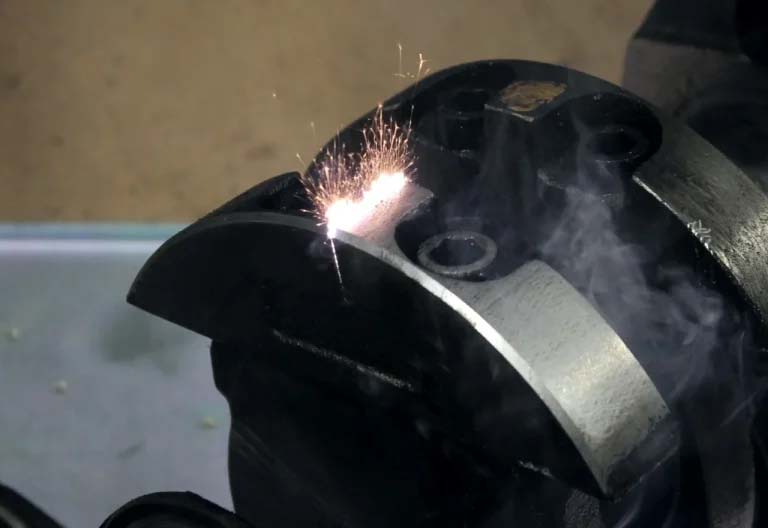
Key Thresholds in Laser Paint Removal
During the laser paint removal process, two critical thresholds must be considered:
- Cleaning Threshold: When the laser energy density exceeds this threshold, the paint or contamination layer is effectively removed.
- Damage Threshold: If the energy density surpasses this level, it may harm the underlying substrate.
To ensure effective cleaning without damaging the base material, laser parameters must be precisely controlled so that the pulse energy density remains between these two thresholds. Each laser pulse removes a specific thickness of the contamination layer. For thicker coatings, multiple pulses are required, and the number of pulses depends on the contamination level. When the laser energy is above the cleaning threshold but below the damage threshold, pulses will continue removing contaminants until the bare substrate is exposed, without affecting the substrate.
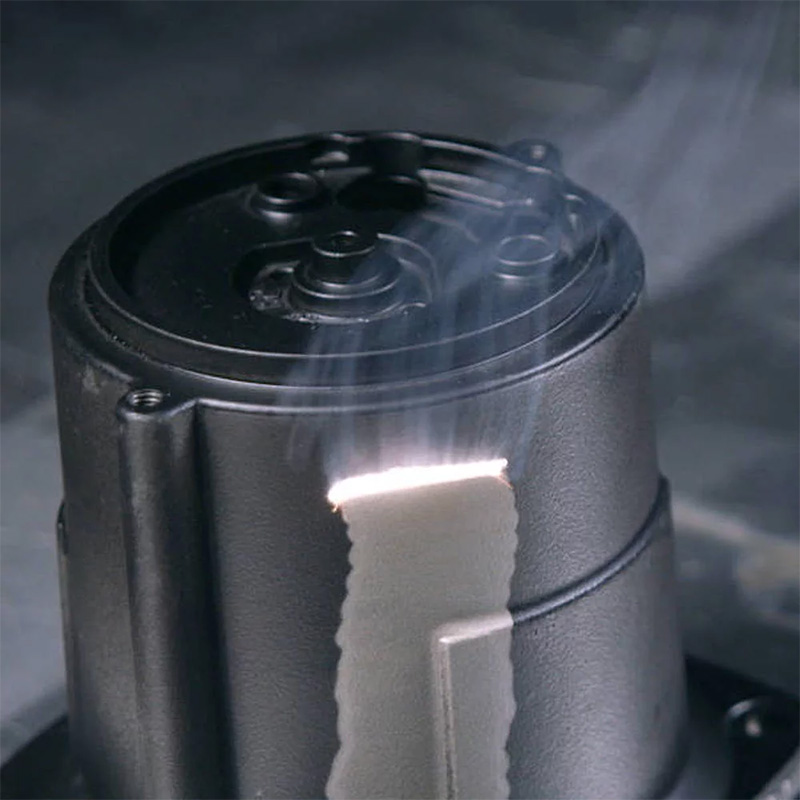
Advantages of Pulsed Laser Paint Removal
Laser paint removal significantly reduces the time required to clean large surfaces. In addition, laser paint stripper is highly precise. It removes old paint, coatings, and stains without contact. This non-contact method is not only fast but also minimizes the risk of damaging the substrate, which is especially important for sensitive materials.
✅ High Speed & Efficiency: Rapid cleaning significantly reduces processing time and labor costs.
✅ Precision & Non-Damage: Effectively removes paint layers from metal surfaces without damaging the substrate.
✅ Eco-Friendly: No chemical agents, no toxic waste, no emissions—fully compliant with green production standards.
✅ Non-Contact Cleaning: Uses laser light for cleaning, causing no wear or abrasion on the surface, making it ideal for precision manufacturing and critical component cleaning.
✅ Cost-Effective & Durable: Long laser lifespan, low maintenance costs, and a high return on investment, helping businesses reduce costs and improve efficiency.

Laser Remove Paint from Wood
Laser cleaning machines use high-intensity laser beams to effectively remove dirt, paint, and decayed layers from wood surfaces. This process leaves the wood clean and smooth while enhancing its natural beauty and texture. Unlike traditional cleaning methods, laser technology preserves the original grain and structure of the wood, preventing surface damage or deformation.
Advantages of Laser Stripping Machine for Wood Paint
✅ High Efficiency & Energy Saving
Compared to traditional methods like sanding, chemical stripping, or heat removal, laser paint removal is faster and more efficient, significantly reducing labor costs and processing time.
✅ Eco-Friendly & Chemical-Free
Laser cleaning requires no chemical solvents or detergents—just laser irradiation—eliminating the need for water or hazardous chemicals and ensuring zero secondary pollution.
✅ Non-Damaging & Surface Protection
As a non-contact cleaning method, laser technology does not scratch, wear down, or alter the wooden surface, preserving its natural texture and luster.
✅ Precision Control for Material Safety
With adjustable laser power and speed, the process can be precisely tailored to target only the paint layer, ensuring that the underlying wood remains untouched.
✅ Wide Range of Applications
Laser paint removal is suitable for various wooden products, including furniture, flooring, doors, wood carvings, and antiques. It efficiently removes aged paint, stains, adhesives, coatings, and oxidation, restoring the wood’s original appearance and creating a clean surface for refinishing or restoration.
Application of Laser Wood Paint Removal
Although laser cleaning is less effective on wood compared to metal or other materials, it still has valuable applications in certain scenarios. It is particularly useful for removing thick paint layers, exterior coatings, and industrial wood mold residues while preserving the original grain and finish for precise restoration.
- Paint Removal from Wooden Doors
Traditional door refinishing methods, such as chemical stripping or sanding, are labor-intensive and may damage the wood. Laser paint removal efficiently strips old paint while keeping the surface smooth and the substrate intact, significantly improving renovation efficiency and quality.
- Wooden Furniture Restoration
For refurbishing second-hand or antique furniture, laser technology allows for precise removal of aged or peeling paint without compromising the structure or intricate carvings. This method is ideal for high-end furniture restoration, preserving both its historical value and aesthetic appeal.
- Antique Woodwork Preservation
Laser cleaning is an ideal solution for carefully removing decades of dirt, varnish, and paint buildup from antique wooden furniture. It reveals the original wood grain and finish, ensuring more accurate and delicate restoration while protecting the underlying craftsmanship.
- Musical Instrument Cleaning
In instrument manufacturing and maintenance, laser cleaning can be used on guitars, violins, pianos, and other wooden instruments to remove sweat, grease, and contaminants that affect both sound quality and appearance.
- Wood Surface Cleaning & Decontamination
During wood processing, dust, oil, and glue residues often adhere to the surface. Laser cleaning efficiently removes these impurities, ensuring a clean and residue-free surface for further processing.
- Enhanced Preservation & Anti-Corrosion Treatment
For wooden sculptures, frames, and decorative panels, laser cleaning provides a non-invasive method to clean and preserve them. By removing oxidation and impurities, it creates a cleaner surface that enhances preservative penetration, improving weather resistance and durability.
- Surface Quality Improvement for After Processing
By precisely eliminating fine particles and contaminants, laser cleaning creates a smoother, more uniform wood surface, making it ideal for painting, carving, decorating, and adhesion processes. This ultimately enhances the final product’s quality and visual appeal.

How to Use a Laser Paint Stripping Machine?
Experiments show that, under the same power conditions, pulsed lasers are 3-5 times more efficient in paint removal than continuous lasers. Selecting the right type of laser is critical for enhancing cleaning efficiency while protecting the substrate.
1. Pulsed Laser vs. Continuous Laser: Comparison of Paint Removal Efficiency
Both pulsed lasers and continuous lasers can effectively remove paint layers from surfaces, but they differ in efficiency and thermal effects:
- Pulsed Laser Cleaning Machine:
Higher Efficiency, Less Heat Impact: Pulsed lasers have higher peak power at the same energy, which allows them to rapidly strip paint without causing the substrate to overheat or experience micro-melting. This results in less thermal damage.
Ideal for Precise, Efficient Paint Removal: Pulsed lasers are better suited for fast and efficient paint removal while preserving the substrate’s integrity.
- Continuous Laser Cleaning Machine:
Suitable for Large Area Cleaning, But Higher Thermal Input: Continuous lasers can work over large areas, but higher thermal input can raise substrate temperature too much, leading to potential damage or melting.
Lower Efficiency: Despite their higher power, continuous lasers may not be as efficient in removing paint without causing thermal issues.
2. Key Factors for Fast and Efficient Paint Removal
To maximize paint removal efficiency and protect the substrate, consider the following:
- Choose Pulsed Lasers:
When the goal is to remove paint efficiently and protect the substrate, pulsed lasers are the preferred choice due to their high efficiency, precision, and low thermal damage.
- Adjust Laser Parameters:
Properly controlling laser parameters such as energy, pulse width, and scanning speed is critical. Keeping the laser energy density in the optimal range ensures high cleaning efficiency without damaging the material.
- Optimize Scanning Methods:
Use an appropriate scanning pattern to ensure even laser exposure across the surface. This helps improve paint removal uniformity and reduces the thermal accumulation effect caused by repeated scanning.
Conclusion:
Pulsed lasers are the ideal choice for fast paint removal due to their high efficiency, precision, and low thermal impact. While continuous lasers are less expensive, they can cause greater thermal effects on the substrate, so careful selection and parameter control are essential.

300W Pulse Laser Cleaning Machine
This handheld pulse laser cleaning machine is typically used for wood cleaning. It offers high beam quality, efficient energy conversion, and a compact design. The wavelength of the fiber laser (typically around 1064–1090 nm) effectively removes various contaminants from wood surfaces. Pulse fiber lasers are especially beneficial as they allow precise control over the energy delivered to the surface, minimizing the risk of overheating the wood.
Fiber pulse laser cleaning machines are ideal for tasks that require precision and care, such as removing paint from wood surfaces without damaging the underlying material. This model features an intuitive control design, making it easy for both beginners and experienced operators to use. It is perfect for workshops and businesses that need a reliable, versatile cleaning solution. Standard pulse laser cleaning machines are available in 100W, 200W, and 300W power options, with prices ranging from $8,000~$20,000.
Metal Rust Removal
The 300W pulse laser cleaning machine efficiently removes rust and oxide layers from metal surfaces, making it an ideal rust removal solution for the heavy metal manufacturing industry.
Surface Restoration
This handheld laser cleaning machine features a laser beam diameter of 4.0mm ± 0.5mm, allowing for precise removal of impurity spots and easy handling of on-site restoration tasks.
Paint Removal
Suitable for cleaning metal, wood, and other sensitive materials, this machine is particularly effective at removing stubborn paint, offering a more efficient and safer paint removal solution.
Oil Stain Removal
It thoroughly cleans oil, grease, and other contaminants from both metal and non-metal surfaces. Widely used in manufacturing and mold industries, it effectively tackles common stain buildup issues during production.
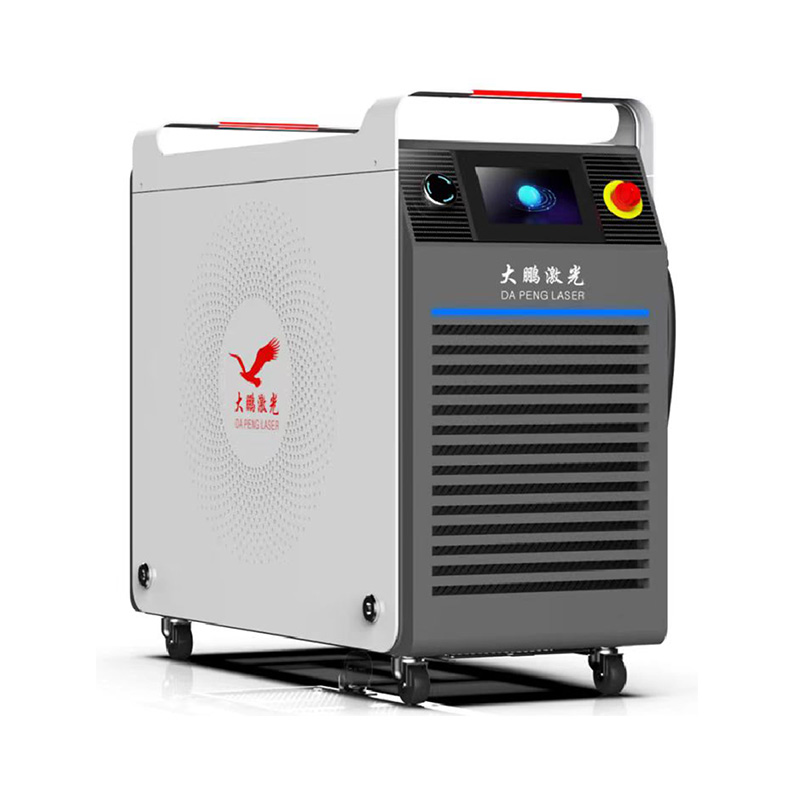
Handheld and portable is a key feature of the 300W pulse laser paint removal machine.This handheld pulsed laser paint removal system is designed to precisely remove paint from various surfaces, including metal, wood, ceramic and other sensitive materials. It is especially effective at removing stubborn paint and coatings. In practical use, the handheld laser cleaning machine offers greater flexibility and control, allowing for precise removal of coatings while protecting the underlying material from damage. Compared to traditional chemical paint removal methods, laser cleaning is safer, more environmentally friendly, and eliminates the use of harmful chemicals, all while providing a more efficient paint removal solution. It is ideal for industrial production lines or on-site restoration tasks.
In a word, a laser cleaning machine for paint removal offers a highly effective and eco-friendly solution for stripping paint from a variety of surfaces. By using advanced laser technology, this method provides precise, non-abrasive cleaning, minimizing material damage and environmental impact. Whether you’re working with metal or wood, laser cleaning ensures fast and thorough results. For optimal efficiency, the 300W pulse laser cleaning machine is an excellent choice, delivering powerful paint removal with ease.
